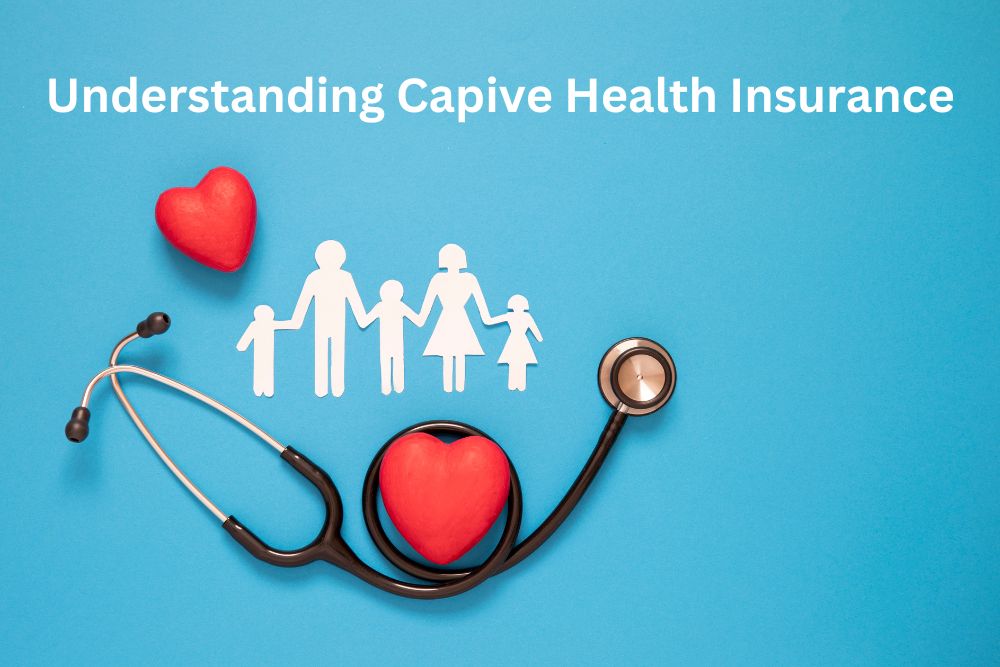
Over the long term, self-insured group health plans save money and keep health insurance rising at reasonable rates, similar to inflation. Rather than receiving staggering group health increases, self-insured plans are more steady.
But, self-insuring a group health plan often seems overwhelming. This type of group health insurance requires a lot – data collection, claims management, and the expertise needed to design your group’s plan.
And many organizations fear that their group might have a catastrophic claim. How would their organization pay for that?
These are valid concerns.
That’s where a captive health insurance plan fits in. Captive health insurance plans address these issues allowing businesses to confidently self-insure.
As an employee benefits advisor and group health insurance broker, I help my clients take control of their group health costs through creative solutions.
Captive health insurance plans are included in those solutions.
In this article, you’ll learn about captive health insurance plans. You’ll find answers to these common questions:
- What is a captive group health insurance plan?
- What are the benefits of a captive group health insurance plan?
- What does a captive health insurance plan look like? Can you give me an example?
- Will a captive group health insurance plan save my organization money?
- How is your premium determined in a captive health insurance plan?
- What happens if our company has a very high claim, one that is greater than our company can afford?
- Is a captive group health insurance plan a good option for my company?
By the end of this short read, you’ll better know if this solution would be a good fit for your organization.
What is a captive health insurance plan?
A captive health insurance plan is a type of self-insured health insurance plan created by a company or group of companies.
If a company is large enough, it can use its resources to create a personalized group health plan for itself.
If a company is smaller, it can join with other companies to create a captive health insurance plan. The companies pool their resources and design a group health plan together.
When small or medium size companies join a captive health insurance plan, each company contributes to a pool of funds that are used to pay the following:
- Employees’ healthcare claims
- Third-party administrator (TPA) costs
- Stop-loss coverage
- Wellness programs
- Employee wellness incentives
- Dental or vision coverage
Each captive health insurance plan is designed by its members. The members ultimately determine how their pooled resources will be used.
What are the benefits of a captive health insurance plan?
A captive health insurance plan offers multiple benefits to its members, including:
- Increased cost savings
- Tailored health care based on your employees’ actual health care needs
- Greater transparency and accountability
1. Cost savings
Captive health insurance plans are based on the specific needs of your employees.
On the other hand, traditional group health plans are standardized by the group health insurance company. With traditional group health insurance, your company is paying for a plan with predesigned employee benefits. In this situation, your company might be paying for benefits your employees don’t need or use.
Captive health insurance plans analyze your employees’ health insurance claims. This data informs your plan’s design.
With a tailored group health insurance plan, you only pay for the health care that your employees use, allowing your business to save money over time.
2. A tailored group health plan
As mentioned above, your captive health insurance plan is based on your employees’ actual healthcare usage. Your plan will reflect your employees’ needs and your company’s goals and desired outcomes.
3. Greater transparency and accountability
A captive health insurance plan lets your company see precisely how your dollars are spent regarding your employees’ healthcare. You will receive medical and drug claim information to ensure that your plan reflects the needs of your team.
With traditional group health, you can not receive this information if your company has less than one hundred enrolled employees. This means you have no real way of assessing how effective your traditional group health insurance plan is at meeting your employees’ needs.
With a captive health insurance plan, you will also know how much you are paying for administrative costs, additional wellness programming, and supplementary insurance.
What is an example of a captive group health insurance plan?
Captive health insurance plans are as unique as each business or group of businesses designing them.
Below is an example of how a business or group of businesses might design their captive health insurance plan:
- A high-deductible structure with a $2,500 individual deductible and a $5,000 family deductible
- A preventive care focus that covers 100% of the annual wellness exams and screenings
- A preferred provider network with negotiated rates for medical services
- A wellness program that includes discounts on gym memberships and rewards for members who achieve health goals
- Additional benefits include dental and vision coverage and telemedicine for remote consultations.
As part of a captive health insurance program, you can design your plan based on the demographics and needs of your employees.
For instance, a company that employs primarily young, healthy employees might design a plan with a high deductible and low premiums because the employees are less likely to need extensive medical care.
Or a company that employs an older workforce might design their plan with a lower deductible and higher premiums because your employees are more likely to need medical care.
Captive health insurance plans allow an organization to create an insurance plan specific to your employees’ needs.
Will a captive insurance plan save my organization money?
Over the long run, a captive insurance plan will be less expensive than a traditional group health insurance program.
Over time, your company will likely see increases that mimic inflation–typically around 6%. At the same time, companies utilizing traditional group health insurance programs see increases of up to 23% or even more.
The first year your company opts for a captive health insurance program, you will likely spend more out of pocket. Your company must buy into the program, paying about 10% of your expected claims.
The money used to buy into the program will be returned to your company if you choose to leave the program.
This money is used to pre-fund claims costs. This guarantees that you have the financial resources needed to pay for your employees’ claims in the early days of your self insured plan.
When using a captive health insurance plan, you can expect to pay 8% to 10% below what a traditional health insurance plan would cost your business long-term.
How is your “premium” determined in a captive health insurance plan?
Your premium is based on your expected claims. Your business will pay a predetermined monthly amount based on the maximum amount you expect to pay for claims.
At the end of the year, if your claims are less than the maximum amount, your business will receive a refund. Most companies roll this refund into the following year.
Suppose your claims are less than the maximum amount. In that case, your business might also get a decrease in your monthly payments the following year.
Generally, businesses that join a captive health insurance program experience lower-than-expected claims in four out of five years. One out of five years, they experience higher-than-expected claims.
What happens if our company has a very high claim, one that is greater than our company can afford?
Captive health insurance plans account for the possibility that you might have an unexpected catastrophic claim. This type of insurance program includes a stop-loss policy for this situation.
A stop-loss policy is an insurance product specifically purchased to cover substantial unplanned claims that your employees might have. This will protect you so your business is not left with an outrageous claim it cannot financially cover.
A stop-loss policy will cover catastrophic claims if they occur.
Is a captive health insurance plan a good option for my company?
A captive health insurance plan is only a good fit for some organizations. Your company could benefit from this type of arrangement if:
- Your company employs between 50 and 800 employees.
- Your company is willing to manage your employees’ healthcare costs.
- Your company is committed to controlling those costs over the long term, not only in a twelve-month period.
If you do not have the HR resources or a group health insurance consultant to manage your group health program fully, this option is probably not best for your organization.
My group health insurance advisor has never mentioned this option. How can I find out more?
Captive health insurance plans are a newer healthcare solution. Some group health insurance advisors may not have the expertise to help you determine if this option is a good fit for your business.
The first step to finding out if your business would benefit from a captive healthcare solution is working with an advisor that has experience with self-insured group health insurance plans.
The second step will require that your organization gather the necessary data to assess if a captive health insurance program would benefit you. An experienced group health advisor can help you gather that information and analyze your company’s health data.
Your group health advisor should also have relationships with established captive health insurance groups. Your advisor should know what type of captive health insurance program would benefit your company.
Partnering with Baily Insurance for Your Group Health
Baily Insurance has an experienced employee benefits team to help you with your group health insurance needs.
With over 40 years of combined experience in the group health arena, our team has the necessary relationships with insurance companies and captive programs to help you determine the best plan for your business.
Our team deeply desires to help you create a long-term group health insurance plan to meet your organization’s needs and goals and to help you control your group health costs.
If you’d like to speak to someone on our team about your group health program, call us at 724.627.6121.
Or you can let us know by filling out our “Contact Us” form below, and one of our team members will be in touch.

